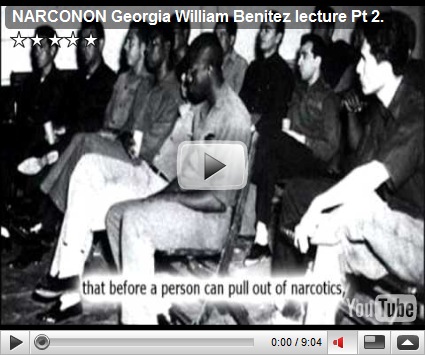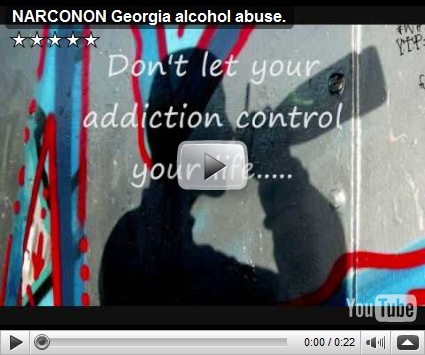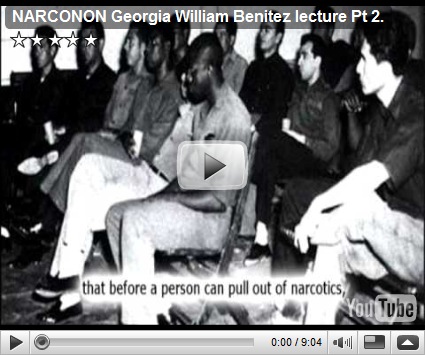http://www.bloglines.com/blog/NarcononGaMichelle
REMEMBER WHAT BENJAMIN FRANKLIN SAID
This bill is bitter sweet. While we are offering more funding for Substance Abuse services we are cutting our school prevention programs, which have been in place since Nancy Regan told us to “Just Say No.
Without the message to kids to “Just say No” more of them will say “yes”. They are not only saying “yes” to the dealer in the school yard, but they are saying “yes” to the drug Cartels and possibly years of misery before they find their way into one of the new government funded drug treatment programs.
We need to remember what Benjamin Franklin said. “An ounce of prevention is worth a pound of cure.”
Abuse of heroin, methamphetamine, pot cocaine and other drugs can be prevented without a doubt and now it is going to be completely up to the families.
Without prevention we can expect the need for many “pounds of cure”.
Narconon
Technorati Tags:
"Narconon Georgia",
Narconon,
Georgia,
drugs,
alcohol,
rehab,
detox,
sauna,
meth,
cocaine,
heroin,
help877-413-3073
“The first budget plan submitted to Congress by President Barack Obama includes an overall increase in funding for the Substance Abuse and Mental Health Services Administration (SAMHSA) but calls for elimination of the Department of Education's Safe and Drug-Free Schools and Communities (SDFS) state grants program as part of $17 billion in cuts to programs deemed wasteful or ineffective.
The budget also calls for modest additions to the budgets of the National Institute on Drug Abuse (NIDA) and the National Institute on Alcohol Abuse and Alcoholism (NIAAA), which would increase $13 million and $5 million respectively.
In justifying the SAMHSA spending plan (PDF) to Congress, the administration said the budget "continues federal support for state and local efforts to increase the availability of quality prevention and treatment services for substance abuse and mental illness ... [and] invests in evidence-based prevention, early intervention, treatment, and recovery services to respond to these preventable and treatable public-health problems."
Addiction-field experts noted that the plan does not include any fundamental reordering of drug-war priorities in favor of treatment and prevention -- action that many expect to see, but perhaps not until the next budget cycle. The administration's budget now goes to Congress, where the House and Senate budget committees will begin drafting their own budget plans and advocates will have a chance to weigh in on the pros and cons of Obama's approach.
"The FY2010 budget shows we continue to have our work cut out for us," said Rob Morrison, interim executive director of the National Association of State Alcohol and Drug Abuse Directors (NASADAD). "On the positive side for SAMHSA, at least we are not facing the severe proposed cuts that have been a staple of budgets for the past four or five years. However, the proposed elimination of the SDFSC state grants program would reduce the funding available to states for much-needed prevention services. Reduced funding at the federal level is a difficult prospect given the tough shape state budgets are in."
Most programs within SAMHSA, including the cornerstone, $1.778-billion Substance Abuse Prevention and Treatment Block Grant to states, would be level-funded compared to FY2009 if Obama's budget recommendations are adopted by Congress.
However, SAMHSA -- which received $3.5 billion under Obama's plan, up $59 million from the FY2009 appropriation -- was one of the few federal agencies to receive an overall funding increase. This was largely due to a $35-million boost for drug treatment courts (including $5 million earmarked for families of methamphetamine users) and an additional $15 million for offender-reentry programs managed by the Center for Substance Abuse Treatment (CSAT). Residential treatment programs for pregnant and postpartum women also received a small increase.
On the other hand, as a budget analysis from NASADAD noted, SAMHSA was also one of the few federal agencies that did not get a share of the federal stimulus package passed by Congress earlier this year.
"We're encouraged by the proposed increase for CSAT and that people in the criminal-justice system are getting the help they need," said Gabrielle de la Gueronniere, deputy director of public policy for the Legal Action Center, who pointed out that Obama's Justice Department budget plan also calls for a $75-million increase in funding for the Second Chance Act and an additional $10 million for the Residential Substance Abuse Treatment (RSAT) program, both of which benefit addicted offenders in prison and post-release.
Obama and former President George W. Bush may not have much in common, but one goal they share is finally killing off the $295-million SDFS program, tagged for years as too diluted to make a real impact on youth.
"While reducing violence and drug use in and around schools is a compelling goal, reviews by an independent evaluator and by a statutory advisory committee have demonstrated that this program is poorly matched to achieving that goal," according to the Obama budget document. "A 2001 study from the RAND Drug Policy Research Center concluded that the structure of the program is 'profoundly flawed.' The program does not focus on the schools most in need and the thin distribution of funding prevents many local administrators from designing and implementing meaningful interventions."
The Obama administration did propose an increase of more than $110 million in funding for the SDFS national grant program, which it said is "better structured to support targeted, high-quality interventions" than the formula-based state grants program. The budget request includes $100 million for a "major new initiative of grant assistance to support new approaches designed to change school culture and climate and thereby improve character and discipline and reduce drug use, crime, and violence," according to the Education Department budget summary.
De la Gueronniere said that while the treatment and prevention community recognizes the need to evaluate programs, "in a lot of communities SDFS is the only source of school-based funding" for youth drug prevention.
"We know this is a tough funding environment, but we also know that our people need care, and that cuts in state funding are continuing and devastating," she said.”
http://www.jointogether.org/news/features/2009/obamas-first-budget-supports.html









